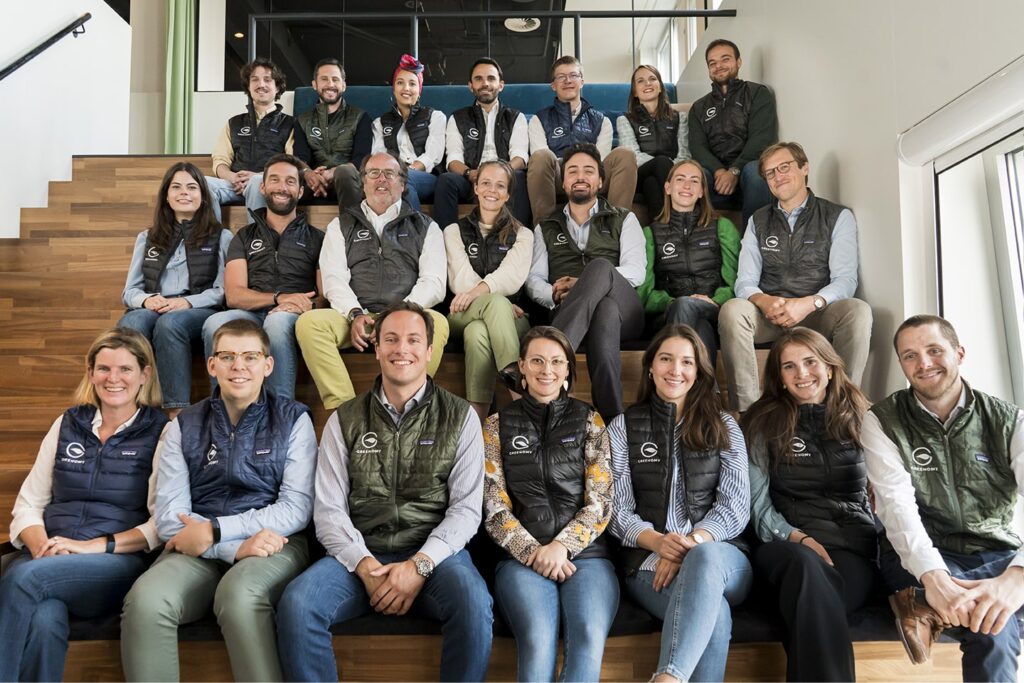Sustainable finance is at the heart of Greenomy. The company was born to provide software for companies to have a smooth transition and better data management to help them and financial institutions with their sustainability reporting processes, which is especially crucial regarding the integration of the EU Taxonomy. Alexander Stevens explained the process and Greenomy’s future plans. Thank you for accepting our interview request.
Please tell us a bit about the journey of Greenomy and how the company was created.
Greenomy was launched during covid remotely from 4 founding individuals’ homes. Our founding objective was to allow companies to report and investors and banks to screen their portfolios efficiently and at a low cost based on the Taxonomy’s criteria. Finding the talent and team that could be trusted to build the Greenomy platform and work for free during uncertain times was a challenge. However, since then, Greenomy has grown to over 30 people all over the globe. Through the confinement imposed by the COVID-19 pandemic, Greenomy has codified the 600 pages of criteria and logic shared in the Technical Expert Group report on sustainable finance.
How is Greenomy contributing to a carbon neutral economy?
Sustainable finance is embedded into Greenomy, a critical factor in achieving the carbon-neutral economy necessary to mitigate the climate emergency. Greenomy has created an innovative solution establishing an all-encompassing sustainability data and analytics ecosystem that connects all critical stakeholders and facilitates the redirection of capital towards sustainable initiatives in line with the EU Green Deal, speeding up the transition to a climate-neutral economy.
Furthermore, over the past months, Greenomy participated in and won the Net Zero Challenge competition of the RFI Foundation Global Virtual Innovation (GVI) Hub and HSBC Bank Middle East Ltd.
What is your business model, and how do your activities and platform help companies step on a more sustainable path?
The Greenomy business model is a SaaS model. Greenomy helps corporates, credit institutions, and asset managers comply with new EU sustainable finance legislation by digitalizing the data capturing and reporting process and enabling them to upload their sustainability data onto Greenomy’s online platform. Our tool then generates a report that complies with regulatory requirements and can be immediately shared with regulators and other financial market participants (FMPs) to provide visibility on entities’ sustainability practices. It allows FMPs to meet their regulatory requirements. The Greenomy platform’s outcome and mission are to facilitate the redirection of capital toward sustainable activities, speeding up the transition to a climate-neutral economy. Furthermore, Greenomy has a transition tool, which tailors recommendations to corporates on how they can further improve their level of sustainability based on their current corporate practices.
Greenomy already has a fully functioning product within the EU that operates a company, investor, and lender portal. EU financial market participants are currently using it to obtain their sustainable finance disclosure reports for the EU Taxonomy/SFDR/NFRD. Greenomy is expanding its product to gradually integrate non-EU Green Taxonomies, such as the upcoming UK Taxonomy, to offer users a one-stop solution for their global operations.

What kind of transformation is needed globally and in Europe to reach our climate goals?
To limit global warming and achieve the goals of the Paris Agreement, countries must stick to their Paris-aligned goals to reduce green gas emissions and become climate neutral by mid-century.
Within Europe, the 50 actions of the European Green Deal will help Europe to be carbon neutral by 2050 and set out a process for the Member States to prepare 10-year strategies to integrate energy and climate plans for the period 2021-30 to cut greenhouse gas emissions by at least 55% by 2030. The Green Deal sets a new course of action for many European industries. The Von der Leyen Commission published the European Taxonomy for sustainable activities for the financial services industry. In short, the EU Taxonomy is a classification system that establishes the conditions under which an economic activity may be considered environmentally sustainable.
For the climate goals to be achieved in Europe, the Green Deal, specifically the EU Taxonomy, should be adhered to. The EU Taxonomy is a stable long-term strategy to advance sustainable finance in Europe and move towards the long-term goal of the Paris Agreement. It set new emission objectives at the EU level, mobilized 100 billion euros to the Just Transition Mechanism to target the most vulnerable regions and sectors, and developed a new stream of sustainable finance.
What are the challenges?
The core challenges for organisations across Europe in setting and achieving their sustainability reporting goals include navigating the dense and new regulatory framework that exists to ensure they provide accurate company sustainability disclosures.
Furthermore, there aren’t enough sustainability experts to cover the upcoming surge of sustainability reporting, and the costs of adapting internal information processes and IT tools may be costly and time-consuming.
Additionally, corporates and States alike are facing uncertainty on where to begin, as well as other challenges, including budgetary issues, fear of failure, and lack of internal alignment.
How does Greenomy try to respond to these challenges?
Greenomy is accelerating the transition to a net zero economy by providing reporting entities with an easy-to-use, in-house tool that simplifies the data reporting. Its SaaS ecosystem enables financial market participants to collect sustainability data directly from the companies they have invested in/lent to.
The Greenomy solution will take this information and generate a regulatory-compliant report with it, which is screened by an auditor and then directly shared with interested financial market participants. Therefore, this ensures that financial market participants comply with their EU sustainable finance reporting obligations, facilitating the transition to a carbon-neutral economy.
Who are your partners?
Our partners are Euroclear, MFEX, Temenos, Manaos, Deloitte, and Inetum
What are your ambitions related to partnerships and the company’s future?
We aim to gradually integrate other non-EU Green Taxonomies to offer stakeholders a one-stop solution for their global operations and an international user-owned ESG market infrastructure.
We will use each of our partners to extend our reach to further clients across the globe, with a number of partners white labeling our solution to implement further the sustainability reporting tools required to comply with the new EU Sustainable Finance Regulations.
What kind of awards have you won so far, and which one(s) are you most proud of?
- We were selected as the International Laureate of the Fintech for Tomorrow Challenge 2020, organised by Paris Europlace, and the European Discovery Fintech Startup 2021 at the European Finance Summit in Luxembourg.
- We were selected as part of the 100 most innovative fintech in the world by FinTech Abu Dhabi in June 2021.
- We won first prize in the “Data Collection, Verification, and Sharing” category at the G20 TechSprint 2021, an international contest organised by Banca d’Italia and the Bank for International Settlements intending to find the most innovative solutions in sustainable finance.
- We won The LHoFT – Luxembourg House of Financial Technology’s acceleration program Catapult Kickstarter 2021, receiving €50.000 in subsidies from the Luxembourg Minister of Economy.
- We won the Net Zero Challenge competition of the RFI Foundation Global Virtual Innovation (GVI) Hub and HSBC Bank Middle East Ltd.
It is not possible to choose one award that we are most proud of since each one symbolises how far we have developed in specific areas, e.g., in the Fintech.



